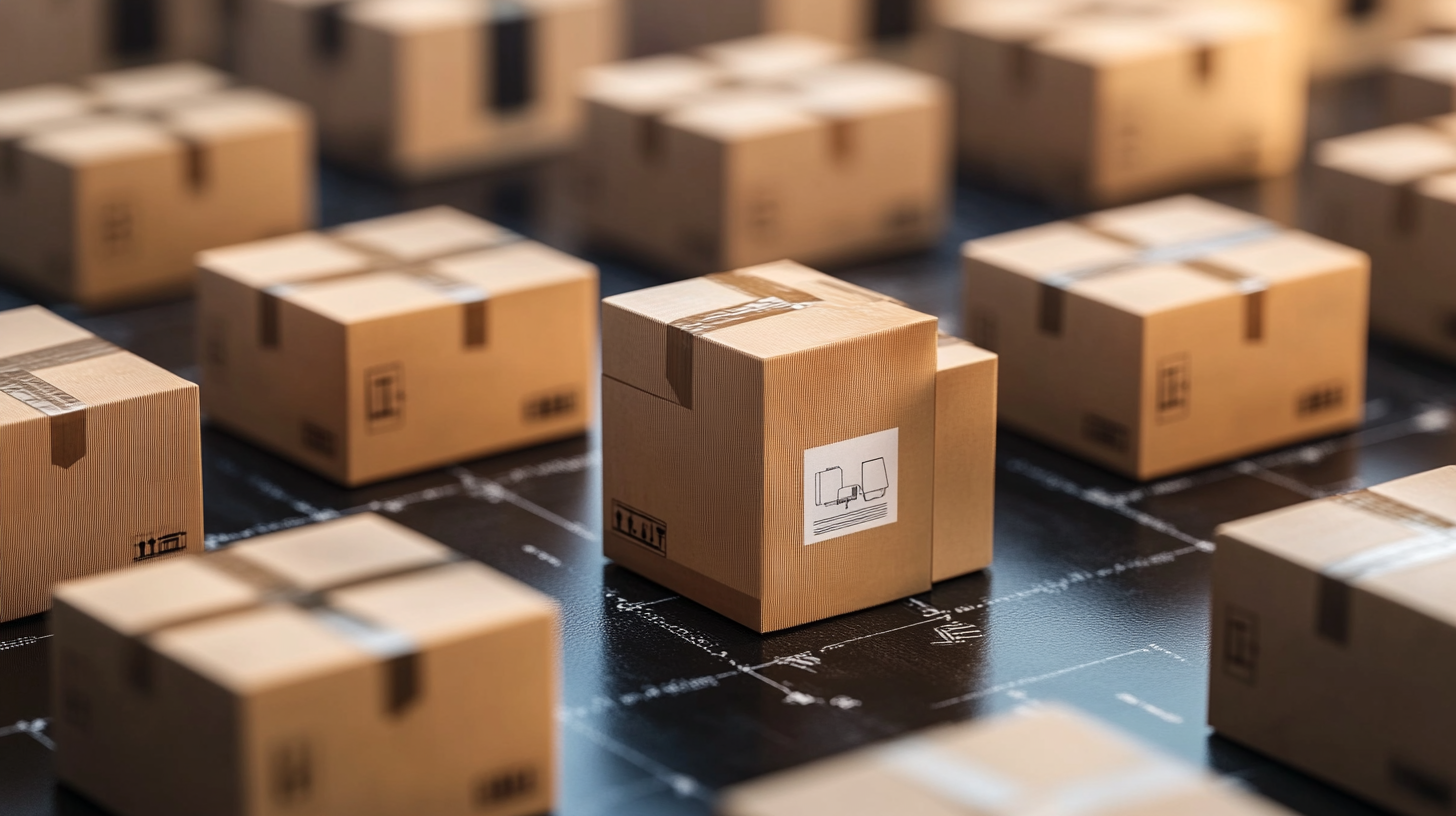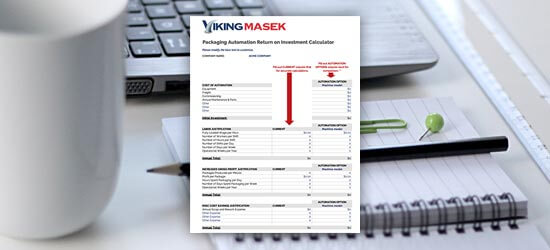
Unlocking Efficiency: Essential Guide to Sourcing Industrial Packaging Equipment Globally
The global industrial packaging equipment market is experiencing significant growth, driven by the increasing demand for efficient and sustainable packaging solutions. According to a recent report by Grand View Research, the market is expected to reach USD 45.2 billion by 2025, expanding at a compound annual growth rate (CAGR) of 4.3% from 2019. This surge is largely attributed to the rising need for damage prevention during shipping and storage, coupled with the growing adoption of automation in manufacturing processes. As businesses strive to enhance their operational efficiency and reduce costs, the sourcing of high-quality industrial packaging equipment has become a crucial component of their supply chain strategy.
Moreover, the challenges in sourcing these essential tools on a global scale cannot be overlooked. Variations in regulations, quality standards, and technological advancements across different regions can complicate the sourcing process. Organizations must also consider the competitive landscape, as the industry is characterized by a multitude of suppliers offering diverse packaging solutions. To navigate this complex market effectively, it is essential for businesses to adopt a strategic approach to sourcing industrial packaging equipment, focusing on quality, cost-effectiveness, and sustainability. This guide aims to provide valuable insights and practical steps to optimize your sourcing strategy, unlocking enhanced efficiency and performance in your operations.

Identifying Key Factors for Success in Global Industrial Packaging Sourcing
When diving into the realm of global industrial packaging sourcing, identifying key factors for success is paramount. According to a recent report by Smithers Pira, the global packaging market is projected to reach $1 trillion by 2024, driven in part by the rising demand for e-commerce and sustainability initiatives. Consequently, companies must be strategic in their sourcing decisions to remain competitive in this dynamic landscape. One critical factor is understanding the regulatory environment across different regions. Compliance with local regulations can significantly affect sourcing efficiency. For instance, packaging materials must meet specific industry standards, such as those set by the FDA for food safety or the REACH regulations in Europe for chemical safety. Failure to adhere to these regulations can result in costly delays and product recalls. Additionally, evaluating suppliers based on their sustainability practices is increasingly vital. The 2022 Global Packaging Survey indicated that over 70% of consumers are willing to pay more for environmentally friendly packaging, highlighting the importance of sourcing from vendors with robust sustainability credentials. This not only aligns with consumer preferences but also mitigates risks associated with resource scarcity and environmental impact, ensuring a more resilient supply chain. Lastly, leveraging technology for efficient sourcing can significantly enhance decision-making processes. Implementing tools such as supply chain management software allows companies to analyze market trends, track supplier performance, and optimize inventory levels. As businesses navigate the complexities of global sourcing, these technological advancements will be instrumental in achieving operational efficiency and fostering innovation within the industrial packaging sector.

Analyzing Market Trends: The Growth of the Global Packaging Equipment Market
The global packaging equipment market is witnessing significant growth, with the healthcare packaging sector alone projected to expand from $181.3 billion in 2024 to an impressive $300.87 billion by 2032. This surge reflects a compound annual growth rate (CAGR) of approximately 6.7%, driven by the increasing demand for safe and efficient medical packaging solutions. As consumer preferences shift towards sustainability and compliance with stringent regulations, the industrial packaging equipment market is adapting to meet these evolving needs.
Additionally, the flexible packaging market is experiencing parallel momentum. By 2032, it is expected to encompass a larger share of the overall packaging landscape, with innovations in materials such as plastics, paper, and aluminum paving the way for more versatile packaging options. With the rising trend of lightweight and environmentally friendly materials, this sector is anticipated to enjoy sustained growth.
Furthermore, the vacuum packaging market is projected to increase significantly, reaching $500.4 billion by 2032, spurred by the growing food processing and handling industries. This is indicative of the global shift towards preserving food quality and extending shelf life through advanced packaging technologies. Overall, these trends highlight the global packaging equipment market's dynamic nature, with various segments poised for expansion driven by technology, consumer preferences, and regulatory frameworks.

Evaluating Cost-Effectiveness: Balancing Quality and Price in Sourcing Decisions
When sourcing industrial packaging equipment, businesses often face the critical challenge of evaluating cost-effectiveness. In an increasingly competitive market, finding the right balance between quality and price becomes essential for maintaining operational efficiency and profitability. Achieving this requires a thorough analysis of both immediate costs and long-term value.
Quality should never be compromised in the pursuit of lower prices. High-quality packaging equipment often boasts a longer lifespan and requires less maintenance, ultimately reducing overall costs. Therefore, it is vital to assess the durability and reliability of equipment before making a purchasing decision. A comprehensive evaluation might include reviews, performance data, and even direct consultations with manufacturers to ensure that the selected equipment meets industry standards and end-user requirements.
On the other hand, price plays a significant role in the sourcing decision. While cheaper options might seem attractive initially, they could lead to unforeseen expenditures related to repairs, replacements, or operational inefficiencies. Businesses should conduct a cost-benefit analysis that encompasses not just the initial purchase price but also the total cost of ownership over the equipment’s lifecycle. By weighing these factors, organizations can make informed decisions that align with their budget constraints while still investing in quality.
Balancing these considerations fosters a proactive approach to sourcing, where companies not only look for immediate savings but invest in solutions that support long-term growth. Such informed decisions in the sourcing phase lay the foundation for improved operational efficiency and competitiveness in the global market.

Leveraging Technology: Innovations Driving Efficiency in Packaging Equipment
In the rapidly evolving industrial landscape, leveraging technology has become paramount for enhancing efficiency in packaging equipment. Recent reports indicate that the global industrial packaging market is expected to grow at a CAGR of 4.5% from 2021 to 2027, reaching a valuation of approximately $70 billion. This surge is largely driven by the integration of advanced technologies, such as automation, robotics, and IoT, which streamline processes and reduce operational costs.
One of the most impactful innovations in packaging technology is the rise of smart packaging solutions. According to a study by Smithers Pira, smart packaging is anticipated to reach a market value of $37 billion by 2024, reflecting a robust demand for features like real-time tracking and enhanced product safety. By incorporating sensors and RFID tags into packaging systems, companies can monitor their supply chains more effectively and minimize waste, thus driving overall efficiency.
Moreover, the adoption of sustainable materials is gaining momentum as part of a broader push toward eco-friendliness in manufacturing. A report from MarketsandMarkets states that the green packaging market is projected to hit $415 billion by 2027, bolstered by innovations in biodegradable and recyclable materials. These advancements not only meet regulatory demands but also cater to the growing consumer preference for environmentally responsible products, leading to improved brand loyalty and market share.
In summary, the packaging equipment sector is undergoing a transformative phase fueled by technology that emphasizes efficiency, sustainability, and smart solutions. As companies strive to optimize their operations, embracing these innovations is essential for remaining competitive in a global marketplace that is increasingly driven by consumer awareness and technological integration.
Building Strong Supplier Relationships: Ensuring Reliability in a Competitive Market
Building strong supplier relationships is a cornerstone of sourcing industrial packaging equipment in today's competitive market. Trust and communication are vital elements that can significantly enhance the reliability of your suppliers. Engaging in regular dialogues not only helps to clarify expectations but also fosters a collaborative environment where both parties can address challenges openly. When suppliers feel valued and understood, they are more likely to prioritize your needs, ensuring timely delivery and consistent quality.
Additionally, investing time in understanding your suppliers' operations and capabilities can greatly enhance collaboration. Conducting site visits, participating in training sessions, and encouraging knowledge sharing can strengthen the bond between your team and your suppliers. This deeper insight into their processes often leads to innovative solutions for packaging challenges that you may face. Celebrating mutual successes and setting joint goals can further align interests and create a sense of partnership beyond mere transactional interactions.
Moreover, a resilient supplier relationship often involves strategic flexibility. In an ever-evolving market, being open to negotiating terms and adapting to changes—such as fluctuating raw material prices or adjustments in production capabilities—can be pivotal. This approach not only showcases your commitment to the relationship but also prepares both sides to navigate uncertainties effectively. By cultivating these strong connections, companies can secure more reliable access to industrial packaging equipment, ultimately driving efficiency and success in their operations.



